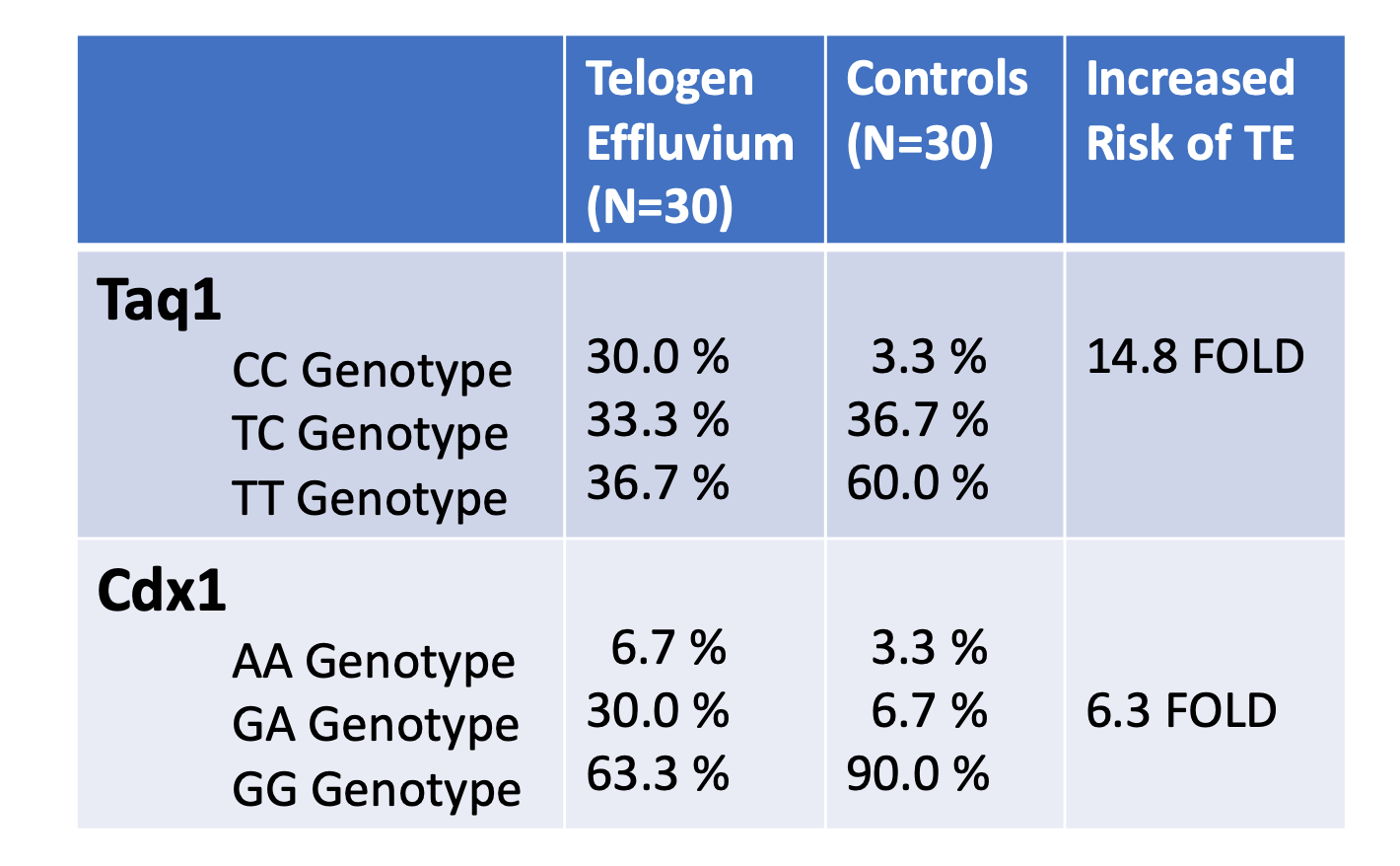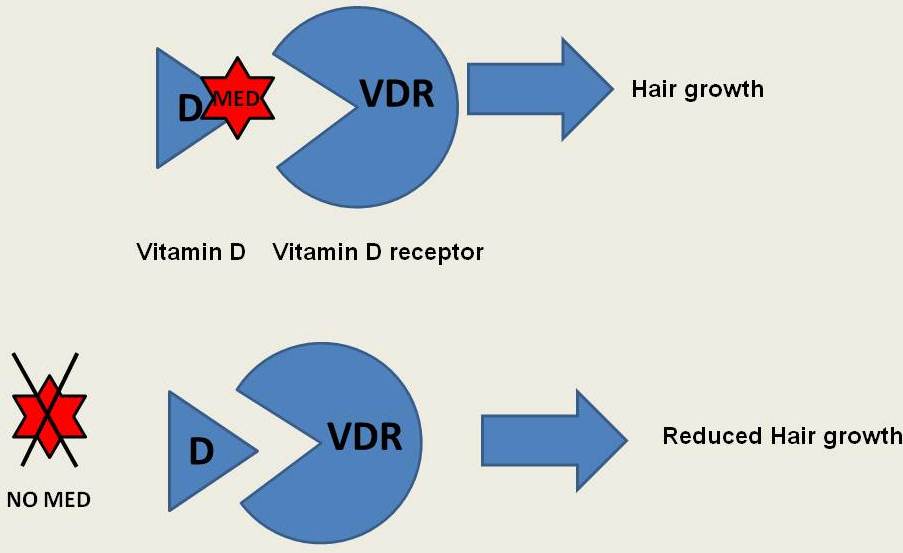Vitamin D Receptor Polymorphisms in Chronic Telogen Effluvium (CTE)
Certain Vitamin D Receptor Changes May Increase the Risk of Chronic Shedding in Women
The role of vitamin D in human health is the subject of tremendous research interest - and also great controversy and debate. Some experts actually say we are focusing way too much on the role of vitamin D nowadays …. and some say we need to focus more. The same is true for the role of vitamin D in the hair follicle.
It’s clear that vitamin D has some sort of role. Vitamin D binds to the vitamin D receptor (or “VDR”) and together this complex sits on various genes and tells the genes what to do. The vitamin D receptor is expressed in the dermal papilla of the hair follicle as well as in epidermal keratinocytes. VDR expression increases in hair follicles in late anagen and catagen phases. Individuals with mutations in the VDR develop complete hair loss - an indication that vitamin D singling in hairs is important. What is less clear is how vitamin D affects hair loss in adults.
Vitamin D receptor polymorphisms (VDR polymorphisms) refer to subtle changes in the genes coding the vitamin D receptor. These are often one or two nucleotide changes that ever so slightly change the vitamin D receptor gene and/or the way the vitamin D receptor gets manufactured in the body. Studies have focused on whether these subtle changes in the VDR (i.e. VDR polymorphisms) affect various aspects of human health. From colon cancer to heart disease, these VDR receptor polymorphisms are an intensively researched topic.
VDR Receptor Polymorphisms in Chronic Telogen Effluvium
Seliet and colleagues from Egypt set out to determine if two VDR polymorphisms have any role in chronic shedding - or what is typically called chronic telogen effluvium (CTE). They studied 30 women with chronic telogen effluvium and 30 controls who did not have chronic telogen effluvium. The specific VDR polymorphisms that were studied were the Taq1 and the Cdx1 polymorphisms.
Results are shown in the table below. Remarkably, the CC genotype of the Taq1 and then GA genotype of the Cdx1 were associated with increased risks of women having chronic shedding. The highest was for the CC genotype of the Taq1 where a 15 fold increased risk of CTE was found.
Polymorphisms in the VDR. the CC genotype of Taq1 confers a 15 fold increased risk of CTE.
Conclusion
This work is interesting. It seems that certain polymorphisms increased the risk of hair shedding in women. Growing research over the years has taught us that some polymorphisms affects the stability and activity of VDR mRNA and protein. Furthermore, it does seem that many patients who don’t response well to vitamin D supplementation may in fact have these sorts of vitamin D receptor polymorphisms. For example, studies have shown that women with certain VDR polymorphisms can improve their bone mass with vitamin D supplementation and women with other VDR polymorphisms do not.
Moving forward
A common question I am asked is whether we can just test for these VDR polymorphisms. That answer is ‘not yet’. Testing for these is not something we do routinely …. and it’s still in the realm of ‘research only’. I am also asked if taking more vitamin D is going to help if one actually has these polymorphisms or simply if one has chronic telogen effluvium. We don’t know those answers either. Certainly if one has low vitamin D levels (as measured by the 25 hydroxy-vitamin D test), taking more vitamin D is going to be quite reasonable.
Reference
Seleit I et al. Vitamin D Receptor Gene Polymorphism In Chronic Telogen Effluvium; A Case-Control Study. Clin Cosmet Investig Dermatol. 2019 Oct 8;12:745-750. doi: 10.2147/CCID.S227232. eCollection 2019.
This article was written by Dr. Jeff Donovan, a Canadian and US board certified dermatologist specializing exclusively in hair loss.








